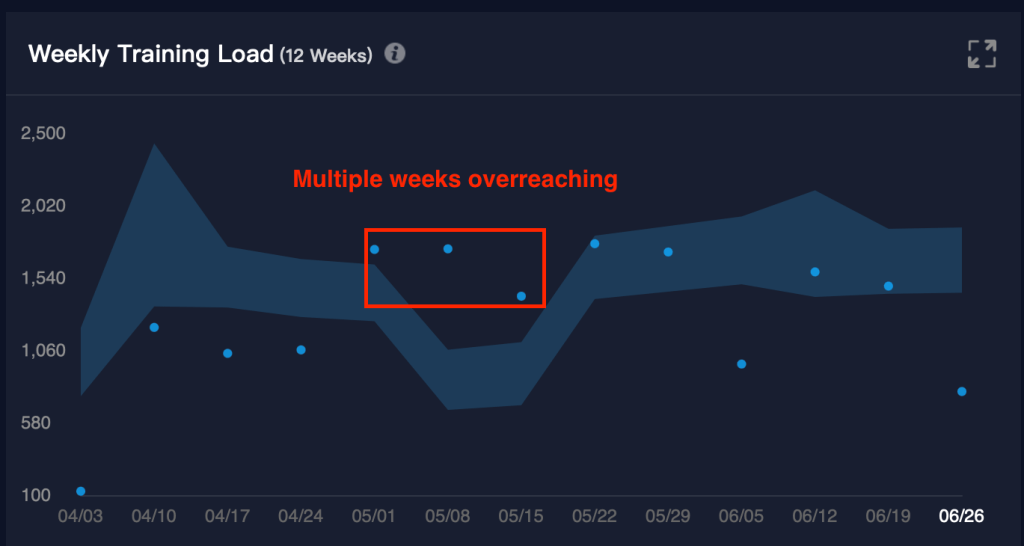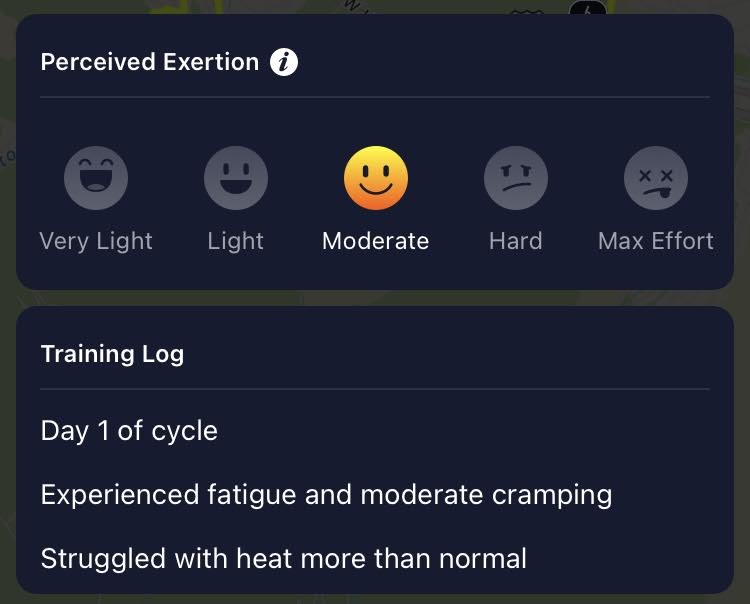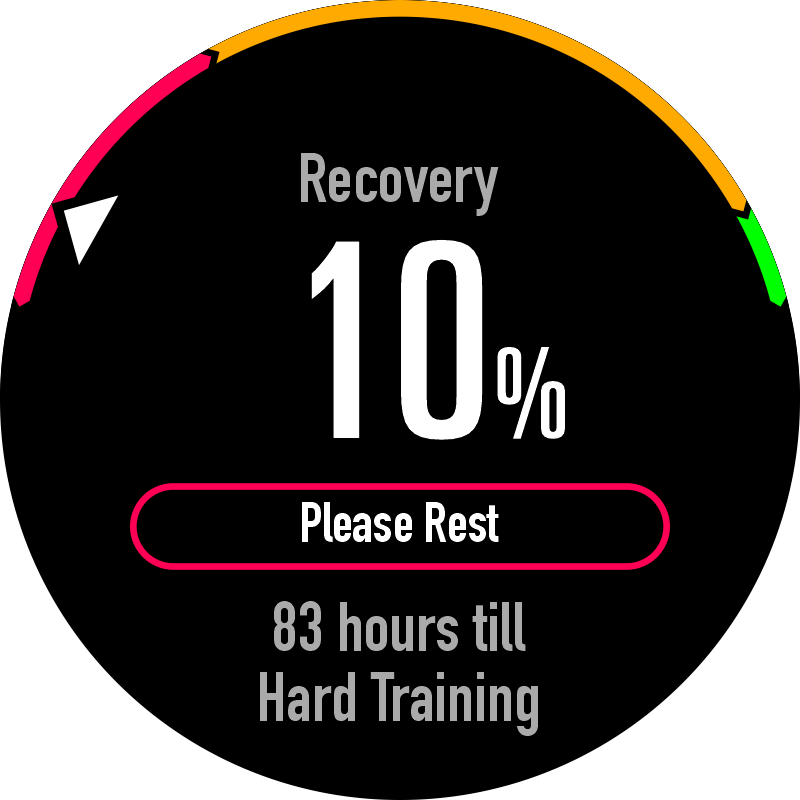Overtraining
It is easy to get carried away with training and sometimes the scale can tip over. Monitoring your Training Status and Training Load can help you gauge whether you are pushing your body too hard.
The Training Load metric takes into account the intensity and duration of your workouts. It quantifies the stress placed on your body during training. Looking at the load by week or month provides a recommended range of stress that is considered optimal for your training. When your Training Load surpasses the recommendation, your Training Status will be flagged as 'excessive'. This is an indicator that you may need to incorporate more rest.

This proactive approach helps optimize your overall training outcomes. The Training Status and Training Load metrics are valuable tools, but they should be used in conjunction with an understanding of your individual needs and limitations.
Tracking Your Menstrual Cycle With Your Training
Tracking the menstrual cycle in the COROS training log after an effort uploads can be beneficial for menstruating individuals, as it provides valuable insights throughout the different phases. By noting the day of your cycle and how you felt, you can identify patterns and better understand the effects of hormonal fluctuations on your performance.
Observing that you feel energetic and strong on day 14 of your cycle, but experience exhaustion and heavy legs on day 26 can help you recognize these symptoms as normal occurrences rather than attributing them to overtraining.
Tracking your cycle in your log enables you to identify any changes in your menstrual pattern. Missing a period can indicate overtraining or excessive stress on the body. Such information can help you modify your training or consult with a healthcare professional. Even if you do not menstruate, keeping notes in your training log can still be valuable for identifying trends.

Remember that everyone's body is unique, and individual experiences during different menstrual cycle phases can vary.
Putting it All Together
Combining the information from your Training Load with the feedback in your training log can provide a comprehensive picture of your training. This will help you make adjustments to optimize your performance and well-being. If you notice consistent fatigue and changes in your menstrual cycle, look at your Training Load. If your training has been above the recommended amount, it might be time to back off.

Here's a more detailed breakdown of the process
- Recognize Overtraining Signs: Overtraining can lead to a variety of physical and psychological symptoms, including fatigue, decreased performance, illness, mood disturbances, disturbed sleep, and changes in menstrual cycle patterns. If you notice any of these signs, it may indicate that your Training Load has been too high.
- Analyze Training Log Notes: Your training log notes are a valuable resource to understand how you felt during your training sessions in the past weeks. Reviewing these notes lets you identify patterns and trends in your performance, fatigue levels, and overall well-being.
- Adjust Training Intensity and Volume: If you notice signs of overtraining, it's time to back off from your current training intensity and volume. Reducing the load allows your body to recover and avoid potential injuries.
- Implement Recovery Strategies: Focus on rest days, proper nutrition, adequate sleep, foam rolling, stretching, and other forms of active recovery.
- Gradually Increase Training Load: After a period of reduced training, you can increase your training while paying close attention to your body's response.
- Listen to Your Body: Always listen to your body and be willing to adjust your training plan accordingly. Don't hesitate to modify your training schedule or seek advice from a coach or healthcare professional.

Incorporating these steps into your training routine will help you maintain a sustainable approach to your athletic pursuits. Remember that recovery is an essential component of a successful training program. Pushing yourself too hard for extended periods can negatively affect your performance and overall health.
Lastly, while the recommended steps above are guidance from our coaches on staff, we strongly urge any individual with symptoms to contact medical personnel. While we can utilize data and training logs to identify trends, medical professionals will be best suited to dive deeper into your own personal needs, should they arise.

/filters:quality(90)/fit-in/970x750/coros-web-faq/upload/images/542289f1acbb4c155aa2c10b1a890e0e.png)





